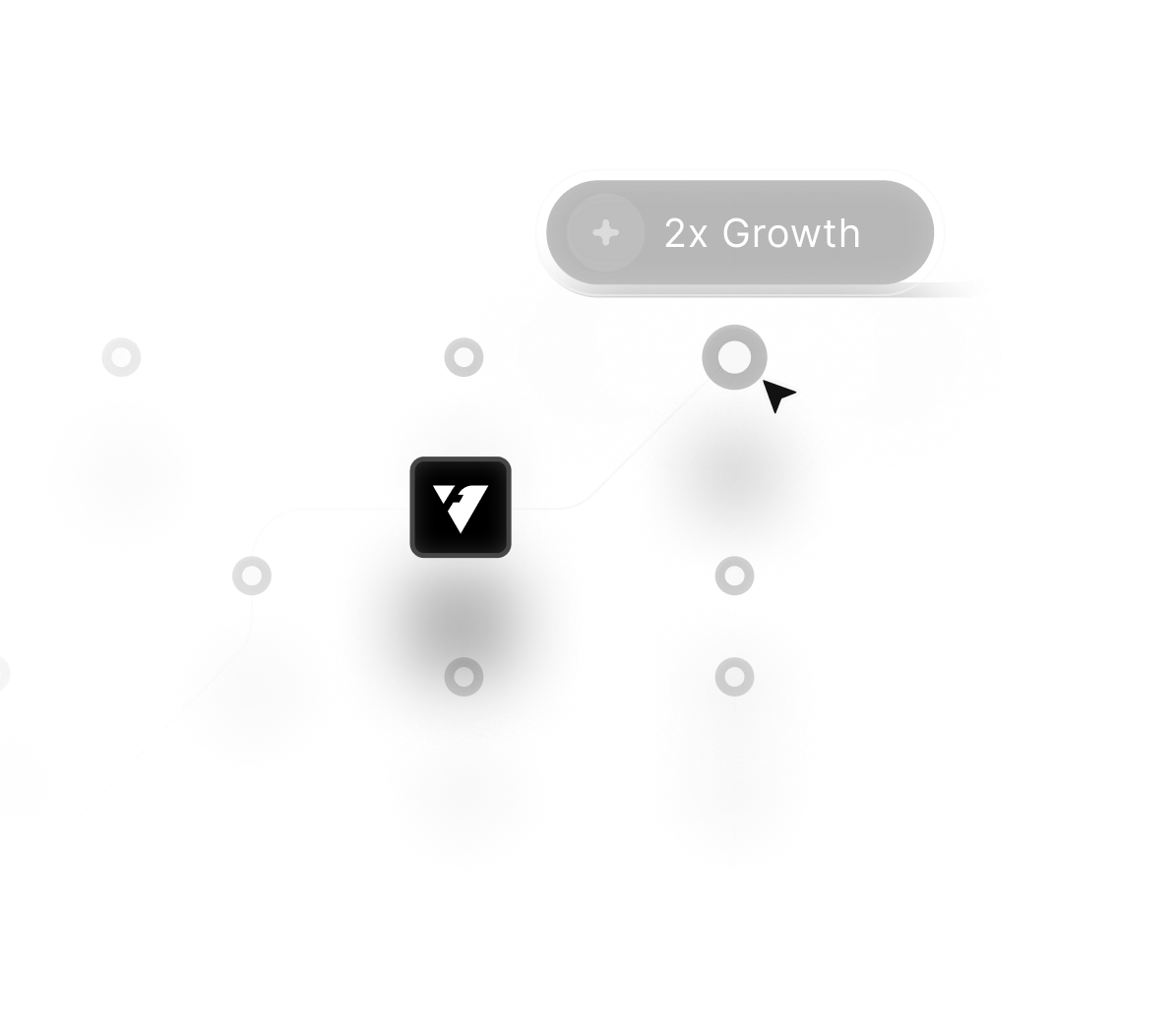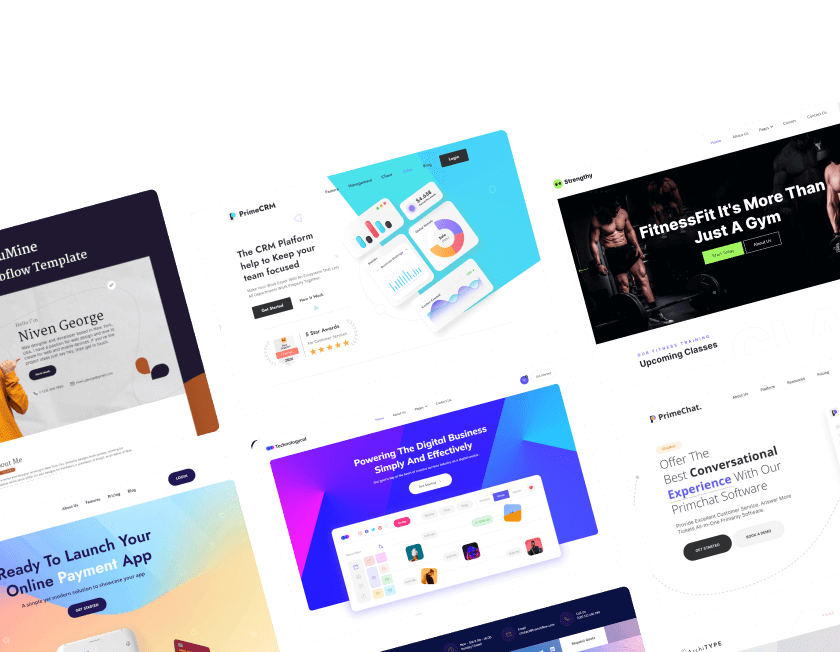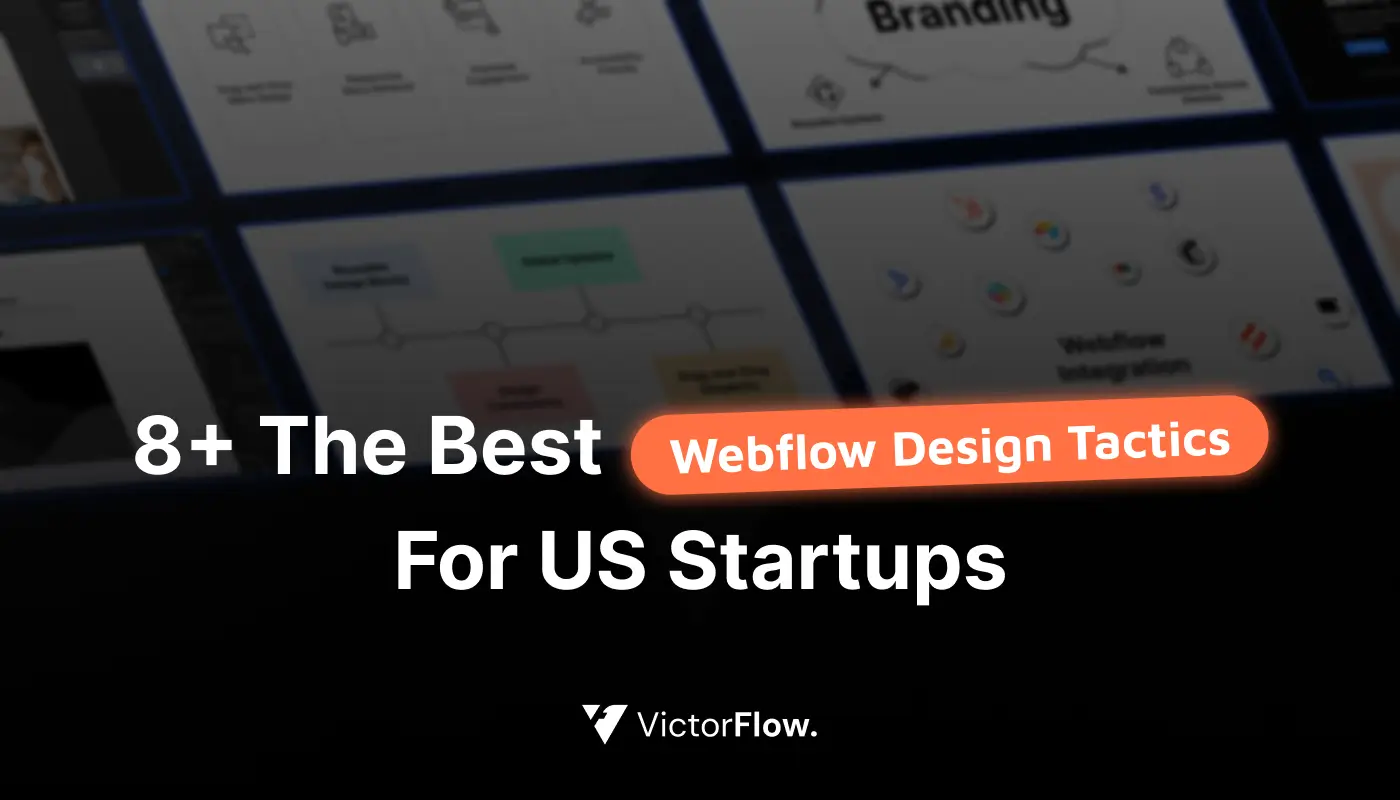
Launching a startup in the U.S. comes with intense digital competition, where having a high-impact website is essential to stand out. Your site isn’t just a digital placeholder, and it’s often the first impression, sales tool, and brand touchpoint all in one.
These Webflow design tactics for US startups are crafted to help new businesses build scalable, conversion-focused, and visually striking websites that align with modern expectations.
By using Webflow’s no-code tools, startups can quickly launch MVPs, test ideas, and iterate designs without heavy reliance on developers.
Each tactic here supports clean UI/UX design, lightweight performance, and responsive layouts that work beautifully across devices.
If your goal is to build a site that’s fast, flexible, and fully optimized from day one, these Webflow tips and tricks offer a competitive edge in 2025’s digital-first startup landscape.
"Ready to apply these design tactics to your startup site?
Let’s build a high-converting Webflow experience - schedule a free consult."
Table of Contents
- What is Webflow?
- Why Webflow is Ideal For US Startups?
- Pros & Cons of Webflow
- 8+ Best Webflow Design Tactics
- Mistakes Startups Should Avoid in Webflow
1. What is Webflow?
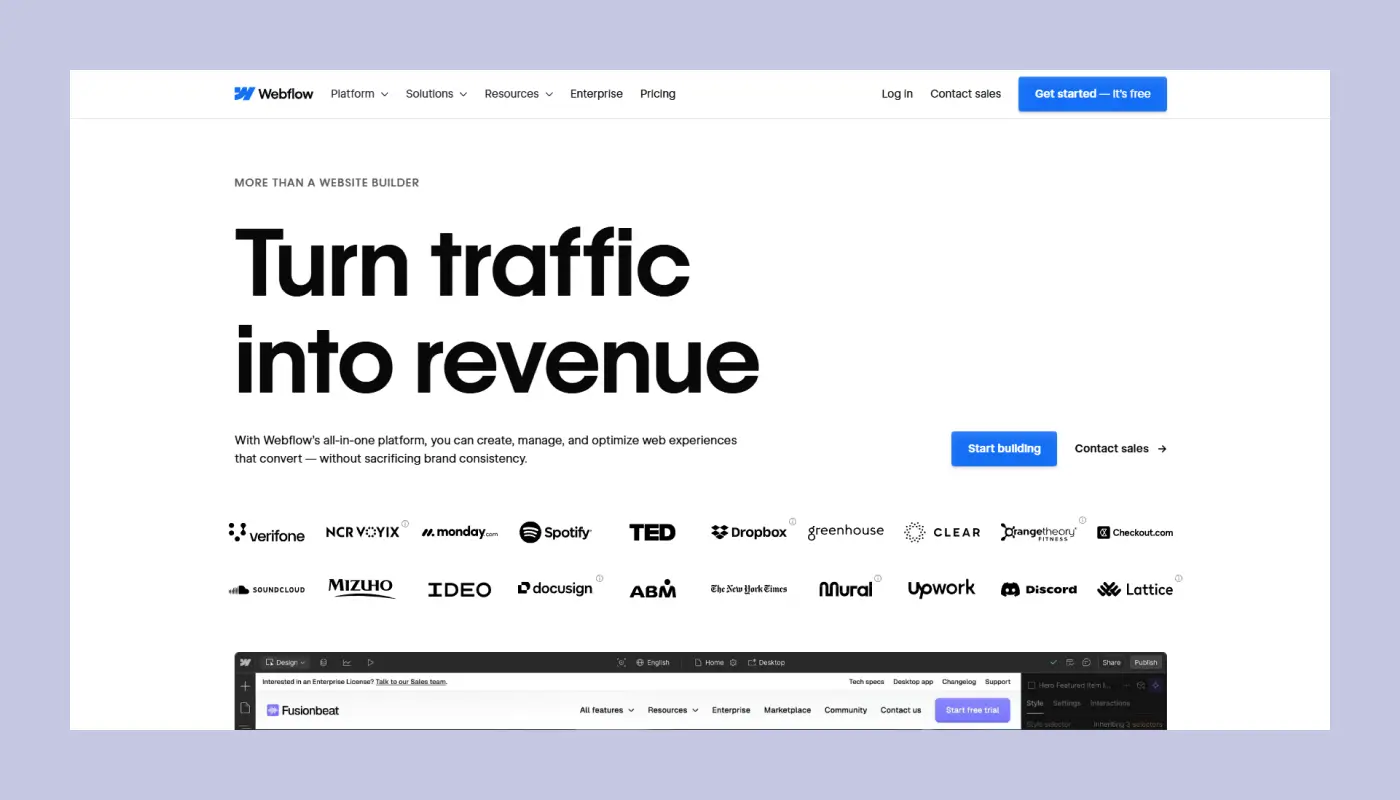
Webflow is a powerful website builder and visual development platform launched in 2013, designed to help users create fully responsive, professional websites without writing code.
It combines the flexibility of traditional web development with the ease of a drag-and-drop interface, making it ideal for startups, designers, and marketers who want to build fast, scalable websites.
The platform offers web design freedom, integrated CMS, eCommerce capabilities, and clean HTML/CSS output, giving startups full control over their site’s design and performance.
Webflow is especially popular in the US startup ecosystem due to its blend of responsive web design customization, SEO optimization, and developer-level flexibility.
2. Why Webflow is Ideal For US Startups?
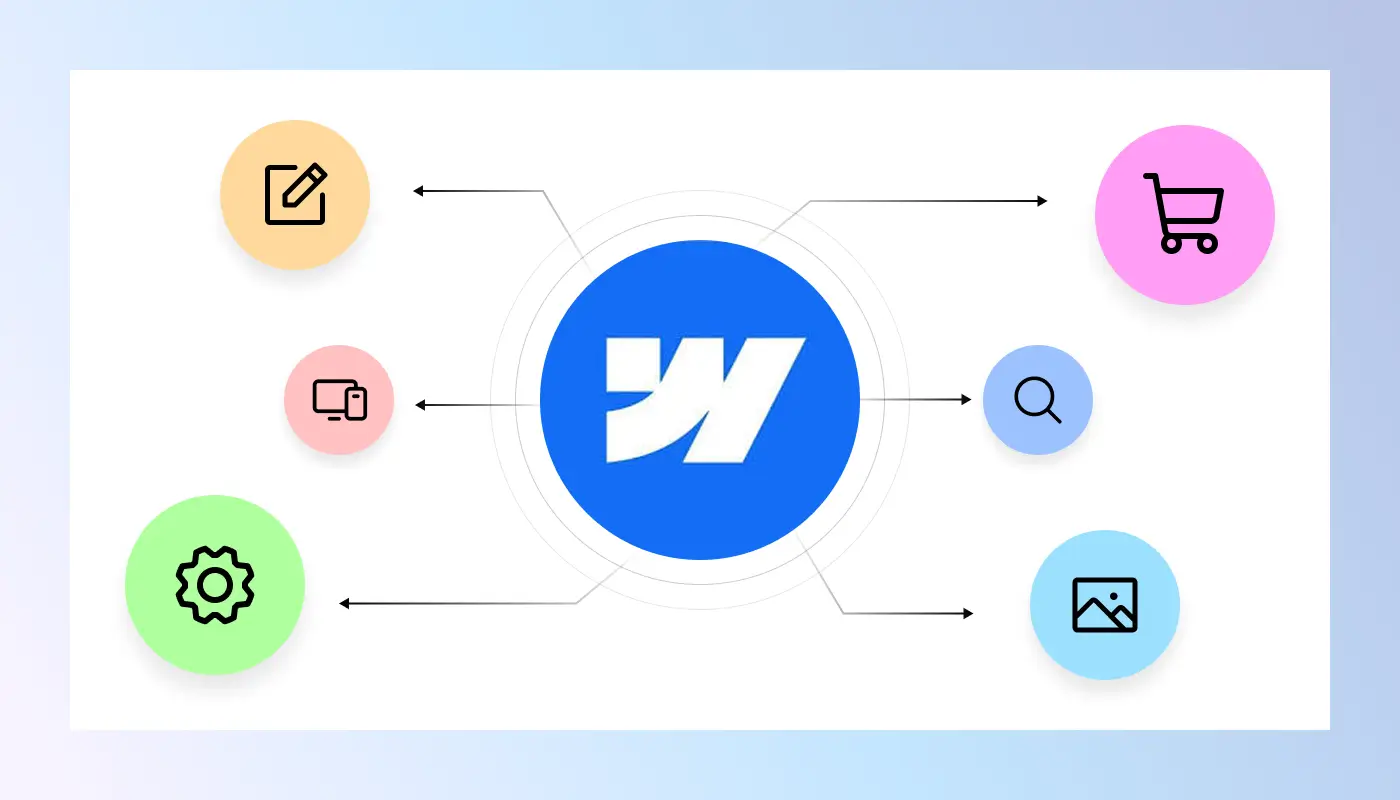
Webflow is the go-to platform for US startups seeking speed, flexibility, and control. Its no-code interface empowers teams to build, test, and iterate without relying on developers for every update and accelerating go-to-market strategies.
It supports custom branding, responsive design flexibility, and SEO-friendly structure, helping startups stand out in crowded markets. Hosting is fast, secure, and scalable, so companies can grow without switching platforms.
Startups also benefit from integrated tools like Webflow CMS, animations, and eCommerce -all under one roof. This versatility makes it perfect for agile teams building MVPs, landing pages, or full-scale marketing websites.
3. Pros & Cons of Webflow
Pros:
✔ No-Code Design Freedom
Designers can build pixel-perfect websites visually, eliminating the need for front-end developers. This no-code website builder empowers faster launches.
✔ Built-In CMS
The Webflow CMS allows dynamic content like blogs or portfolios without relying on third-party plugins. It’s ideal for scaling content efficiently.
✔ SEO Optimization Tools
Customizable meta titles, descriptions, alt text, and clean code structure make Webflow a SEO-friendly platform.
✔ Responsive by Default
All websites are fully mobile responsive, ensuring a consistent experience across all screen sizes with minimal extra work.
✔ Fast & Secure Hosting
Webflow provides high-performance hosting on AWS with automatic SSL, fast load times, and global CDN, with no separate setup required.
Cons:
❌ Learning Curve for Beginners
New users might find the interface overwhelming, especially if they’re unfamiliar with layout concepts like flexbox or CSS grid.
❌ Limited E-commerce Features
Webflow’s e-commerce capabilities are basic compared to platforms like Shopify or BigCommerce, especially for complex stores.
❌ No Native Multi-language Support
For startups targeting global markets, adding multiple languages requires third-party tools like Weglot or custom setups.
❌ Expensive for Larger Teams
While affordable for individuals, team plans and site scaling can get pricey, especially with multiple editors or large CMS databases.
❌ Backend Limitations
Webflow isn’t designed for building complex web apps or handling advanced user authentication natively.
4. 8+ Best Webflow Design Tactics
1. Responsive Design
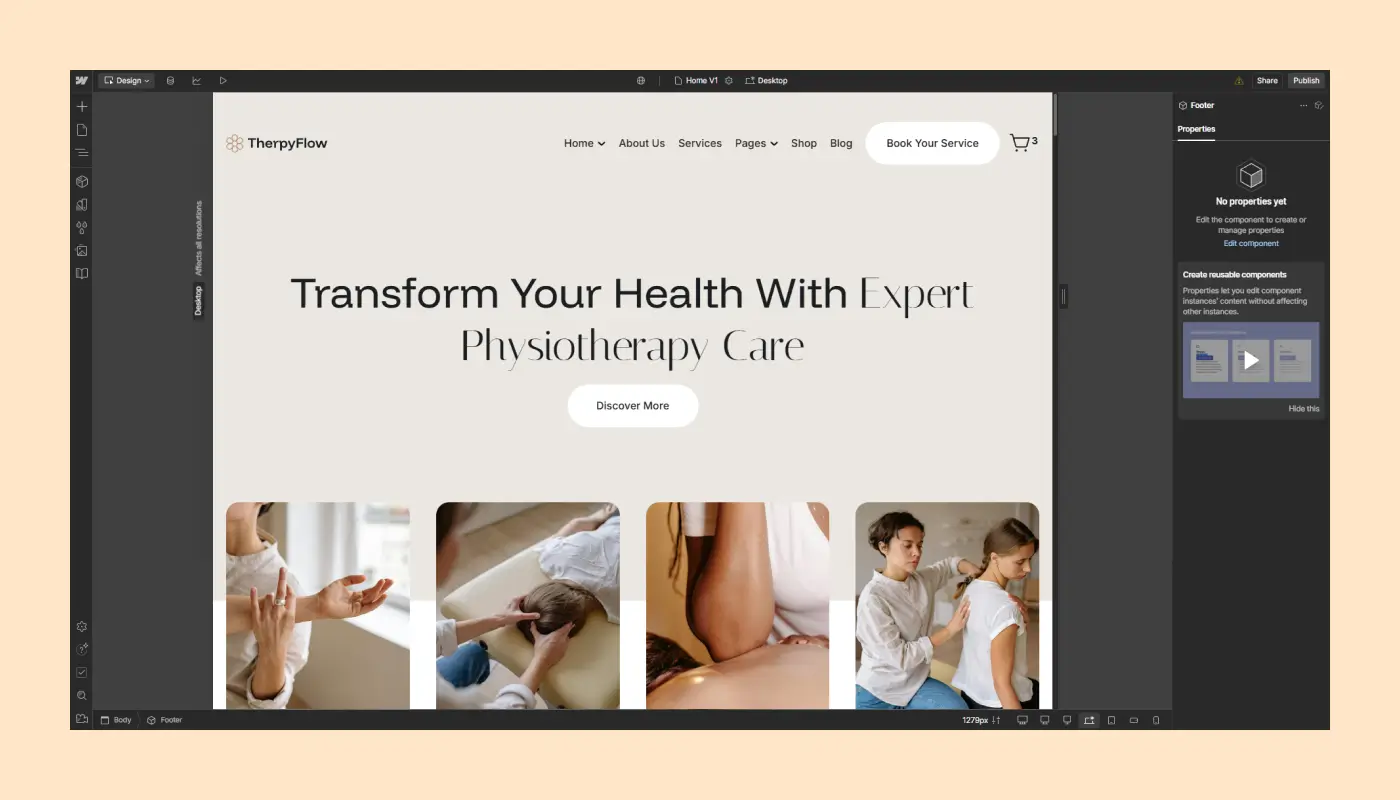
Webflow’s responsive design system ensures websites look and perform flawlessly across all devices, with desktop, tablet, and mobile. It gives startups complete control over layouts without writing code.
Startups can preview and adjust breakpoints visually, allowing tailored experiences for each screen size. Elements like font sizes, padding, and grid layouts adapt fluidly.
Webflow also supports relative units like VH, VW, and REM, enabling dynamic scaling based on viewport dimensions. This approach guarantees better UX performance and accessibility across devices.
Key Benefits:
- Device-Specific Customization - Tailor layouts for mobile, tablet, and widescreens in a single dashboard.
- No Extra Plugins Needed - Native tools handle responsive design without third-party add-ons.
- Faster Page Load Times - Mobile-optimized assets and flexible layouts reduce loading lag.
- Improved Mobile SEO - Google prioritizes mobile-first sites; Webflow’s output aligns with SEO best practices.
2. Intuitive Navigation
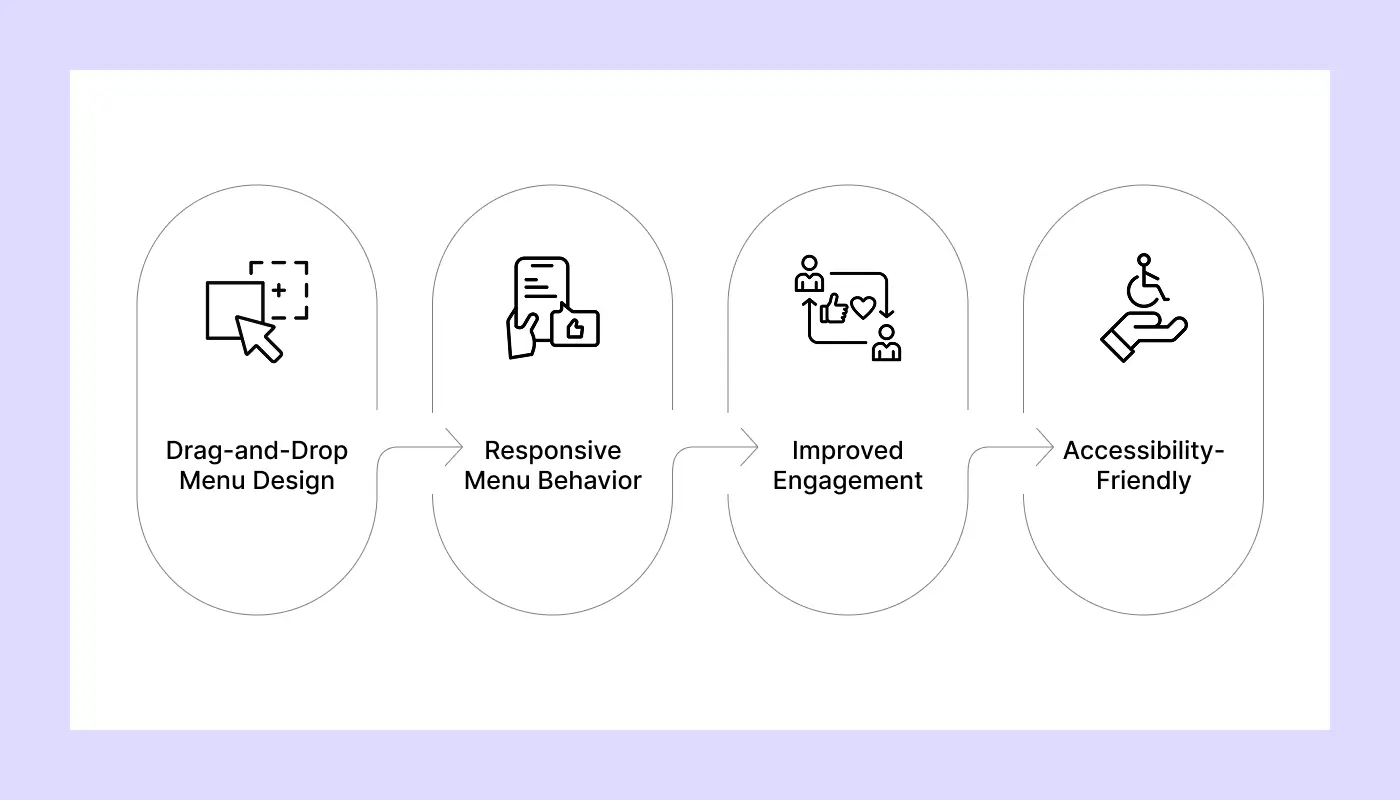
Webflow enables startups to create clean, user-friendly navigation systems that guide visitors effortlessly through their website.
Its visual editor lets you design custom navbars, dropdowns, and sticky headers with precision, with no code required.
Navigation elements can be dynamically adjusted for different devices, ensuring seamless UX on mobile, tablet, and desktop. The platform also supports scroll interactions, anchor links, and mega menus, enhancing usability for content-rich sites.
Key Benefits:
- Drag-and-Drop Menu Design - Customize navbars visually for fast and flexible layout adjustments.
- Responsive Menu Behavior - Ensure mobile-friendly toggles and hamburger menus function flawlessly.
- Improved Engagement - Smooth navigation keeps users exploring and reduces bounce rates.
- Accessibility-Friendly - Add ARIA labels and keyboard navigation to meet usability standards.
3. Engaging Interactions

Webflow empowers startups to build interactive, animated experiences without writing code. Its powerful interaction and animation tools help bring static pages to life, capturing attention and guiding users through key actions.
You can trigger animations on scroll, hover, click, or page load, making the site feel dynamic and responsive. These effects create a polished impression and encourage deeper engagement with your content.
Key Benefits:
- No-Code Animations - Build complex interactions visually using Webflow’s intuitive timeline-based editor.
- Microinteractions For UX - Add subtle hover states, button effects, and scroll cues that enhance usability.
- Increased Time on Site - Interactive elements capture attention and encourage exploration.
- Customizable Triggers - Control exactly how and when animations appear for maximum impact.
4. Branding Consistency
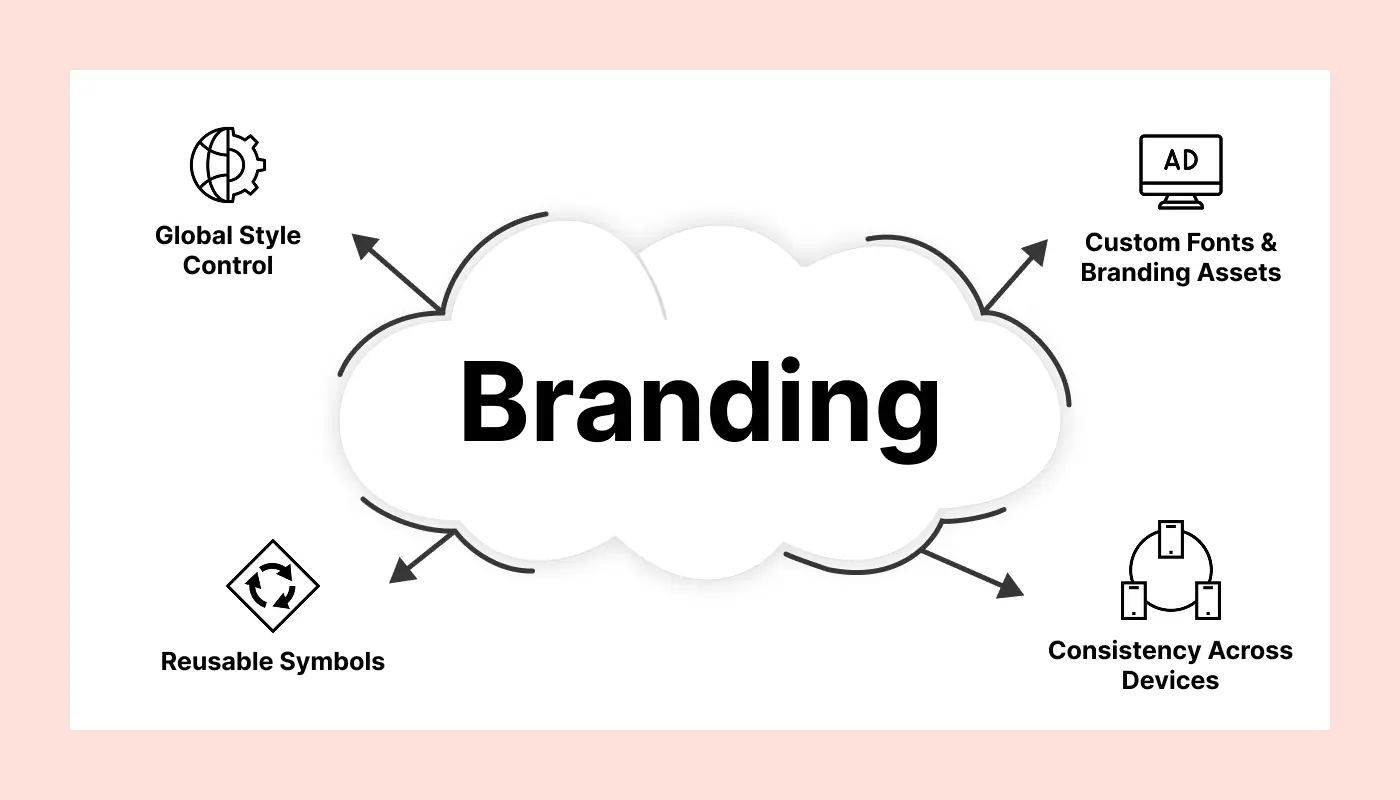
Webflow allows startups to maintain a unified brand identity across every page and element. With global style settings, reusable components, and custom typography, it ensures your visual branding remains cohesive and no matter how fast your site evolves.
You can define brand colors, fonts, logo placement, and layouts centrally, helping maintain a consistent user experience that reflects your startup’s personality.
Key Benefits:
- Global Style Control - Manage colors, fonts, and spacing site-wide with a single update.
- Reusable Symbols - Use consistent headers, footers, and CTAs across pages for stronger recognition.
- Custom Fonts & Branding Assets - Easily integrate your startup’s brand kit for a polished feel.
- Consistency Across Devices - Responsive design ensures branding looks unified on desktop, tablet, & mobile.
5. SEO Optimization
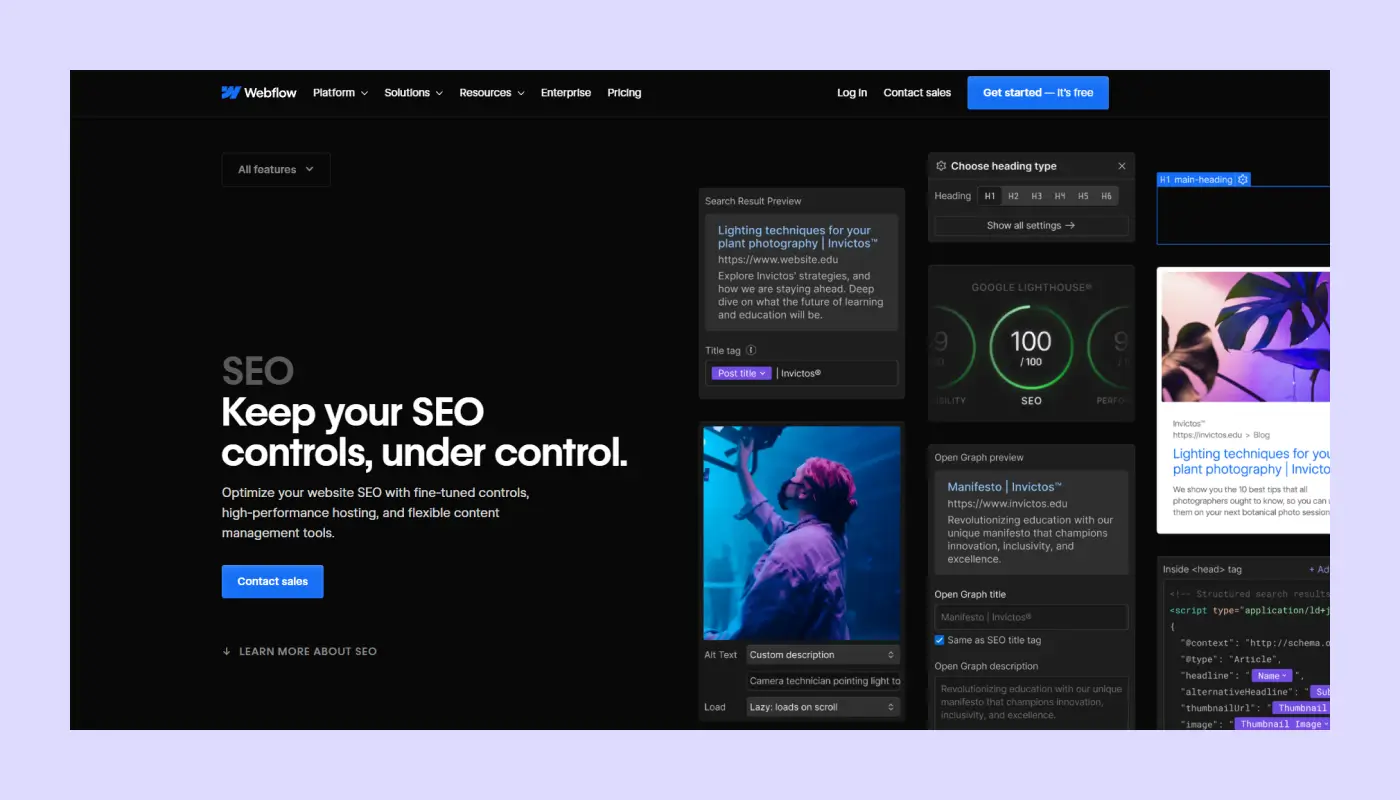
Webflow offers built-in SEO tools that help startups improve their site’s visibility without relying heavily on third-party plugins. From editable meta tags to clean code output, it’s designed to support search engine best practices from the ground up.
Startups can easily manage key SEO elements like page titles, meta descriptions, alt text, and canonical tags, all directly within the designer interface.
Key Benefits:
- Custom Meta Titles & Descriptions - Optimize each page for target keywords to improve click-through rates.
- Automatic Sitemap & Clean Code - Webflow auto-generates a search-friendly sitemap and semantic HTML.
- Image Alt Text Control - Easily assign alt attributes to improve image indexing and accessibility.
- Fast Page Load Times - Lightweight code and CDN support contribute to better core web vitals.
6. CMS Mastery
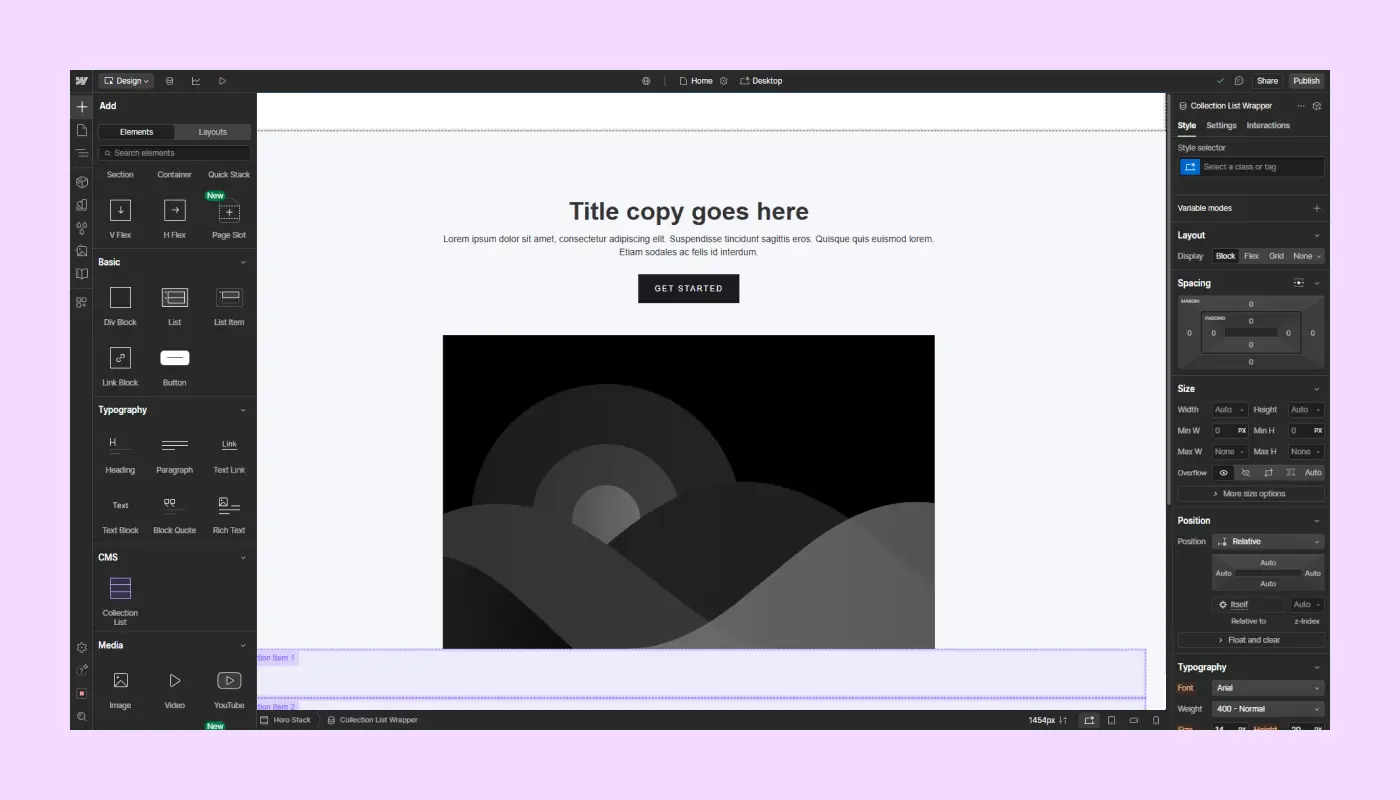
Webflow's CMS (Content Management System) gives startups complete control over dynamic content, without relying on complex backend systems.
It’s a visual-first approach that lets you build, manage, and update blog posts, case studies, products, team pages, and more, all from a single source of truth.
You can structure collections with custom fields tailored to your content type, then visually design how each item appears across the site. No coding required, yet fully flexible.
Key Benefits:
- Dynamic Content Collections - Easily create blogs, portfolios, or landing pages using repeatable content structures.
- Custom Fields - Add text, images, videos, toggles, dates, or even reference other collections.
- Visual Design Freedom - Style CMS content in the Designer like static content—fully responsive and customizable.
- Editor Access For Teams - Clients or teammates can edit content directly on the live site, with no design risk involved.
7. Custom Components

Webflow’s custom components empower startups to build reusable, modular design blocks that are perfect for maintaining consistency and scaling faster.
These components can include navigation bars, footers, pricing tables, testimonials, or entire sections, all crafted visually without writing code.
Once a component is created, you can reuse it across multiple pages. Make a change in one place, and it updates everywhere instantly, saving time and ensuring brand alignment.
Key Benefits:
- Reusable Design Blocks - Create and replicate layouts across your site with ease.
- Global Updates - Edit once, apply changes site-wide, and ideal for fast iterations.
- Design Consistency - Maintain uniform styles, spacing, and layout in all components.
- Drag-and-Drop Simplicity - Build custom sections quickly without touching code.
8. Integration Capabilities
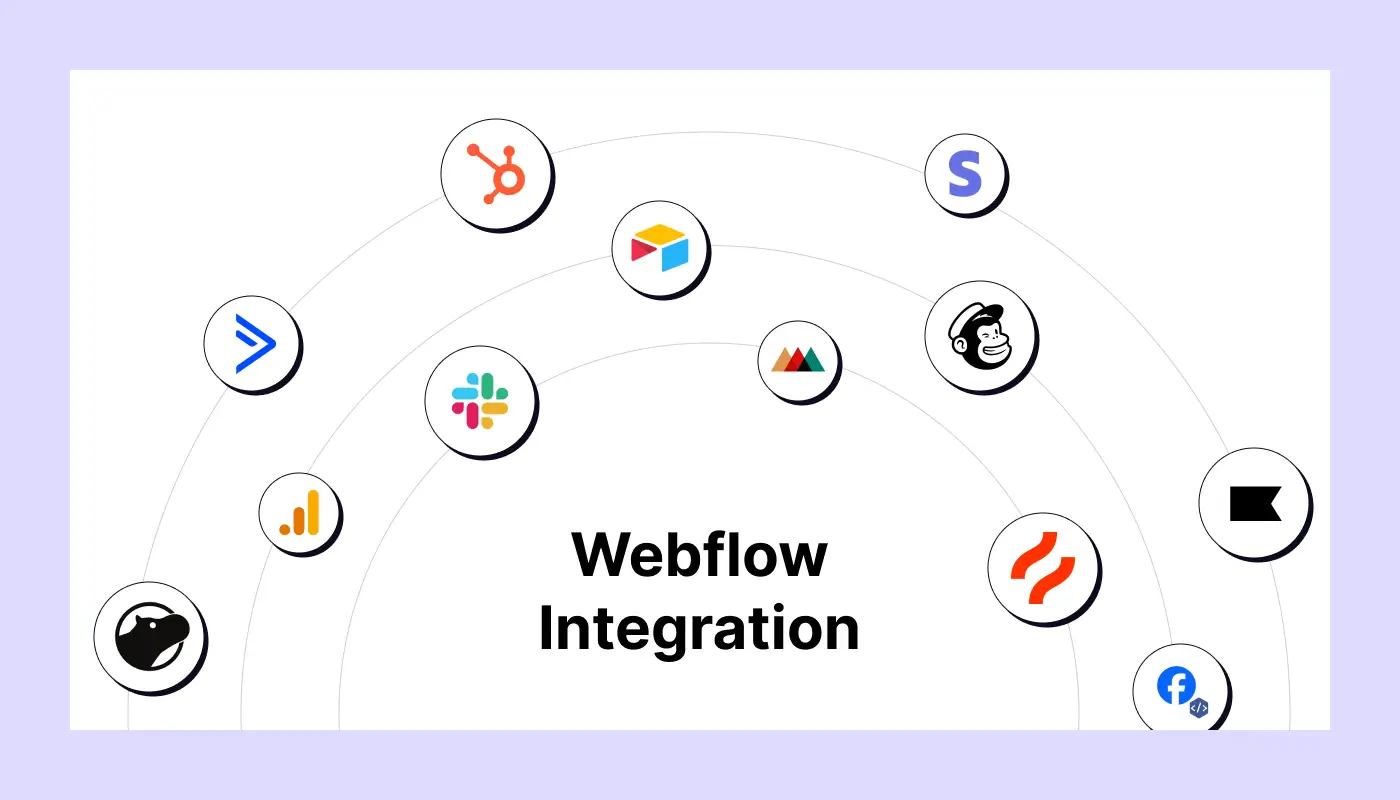
Webflow’s integration capabilities give startups the flexibility to connect essential tools without relying heavily on developers.
From CRM systems to analytics and marketing platforms, integrations streamline workflows and enhance functionality.
You can embed third-party services directly or connect through platforms like Zapier, Make, or native Webflow apps. This allows you to automate tasks, track user behavior, manage leads, and boost performance.
Key Benefits:
- No-Code API Access - Connect tools like HubSpot, Airtable, or Slack without writing code.
- Marketing Automation - Sync with Mailchimp, Klaviyo, or ActiveCampaign for seamless email flows.
- Analytics & Tracking - Easily plug in Google Analytics, Hotjar, or Facebook Pixel.
- Ecommerce Extensions - Integrate with Stripe, Shippo, or Printful to scale online sales.
9. Performance Optimization
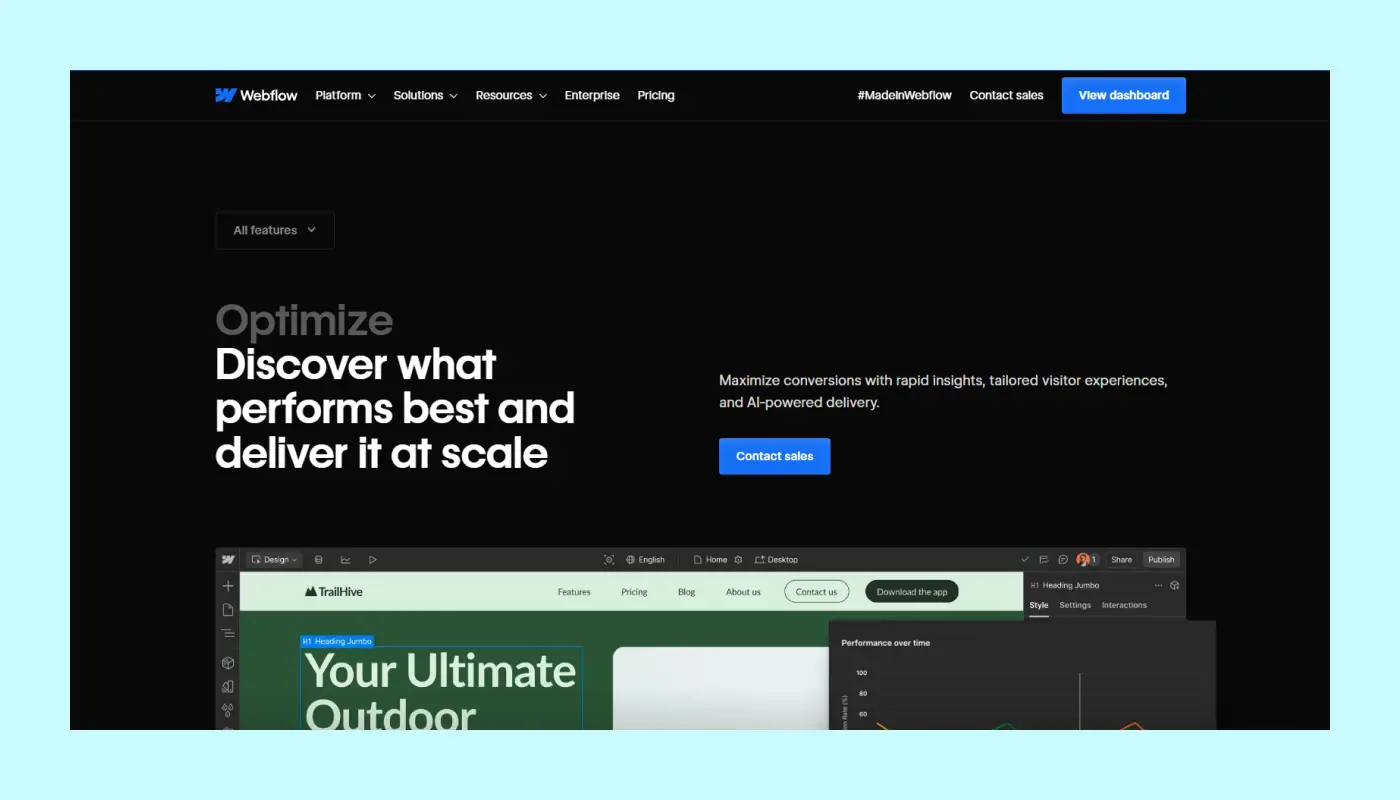
Webflow's performance optimization tools help startups deliver lightning-fast websites that boost SEO, improve user experience, and reduce bounce rates. Every element is from clean code to lazy loading and is designed to keep your site lean and fast.
Pages are automatically optimized with minified code, responsive images, and CDN delivery for global speed. You also have full control over animations and scripts to avoid unnecessary weight.
Key Benefits:
- Automatic Image Optimization - Webflow serves scaled and compressed images for faster load times.
- Built-In CDN - Global content delivery network ensures fast access worldwide.
- Clean, Semantic Code - Generates minimal and efficient HTML, CSS, and JavaScript.
- Lazy Loading - Defer offscreen content to speed up the initial page load.
10. Testing and Refinement
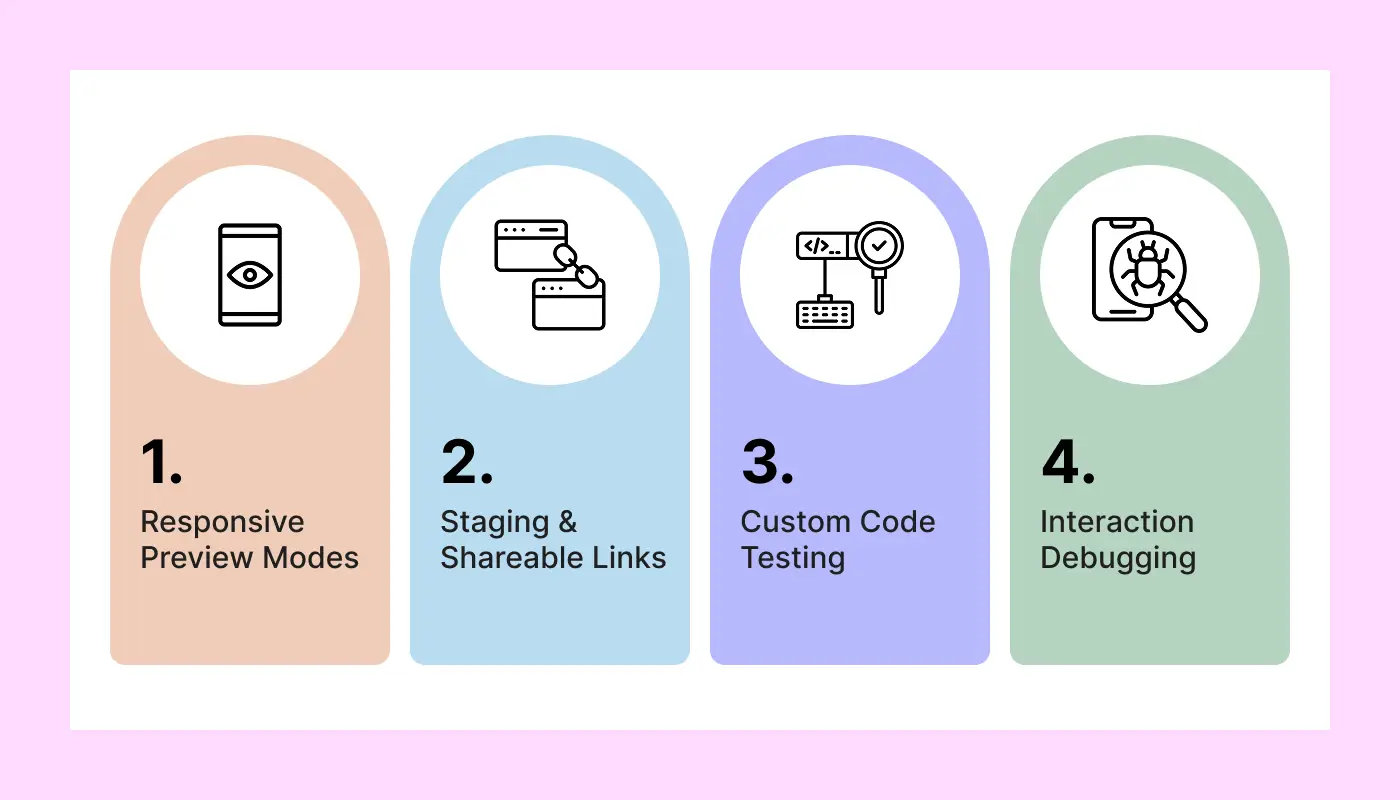
Webflow’s testing and refinement features empower startups to fine-tune every element of their site before and after launch. From visual QA to custom code debugging, it offers full control across devices and browsers.
Teams can preview changes instantly, test interactions, and identify performance gaps with ease. Responsive previews and staging links make collaborative reviews seamless.
Key Benefits:
- Responsive Preview Modes - Instantly test layouts across devices and screen sizes.
- Staging & Shareable Links - Share pre-launch versions for feedback and client review.
- Custom Code Testing - Inject and test custom HTML, CSS, or JS directly in the designer.
- Interaction Debugging - Review animations and triggers visually for smoother UX.
5. Mistakes Startups Should Avoid in Webflow

Launching your startup website on Webflow is exciting, but missteps in design and strategy can undercut your momentum. Understanding what to avoid is just as important as knowing what to build.
Common Pitfalls to Steer Clear Of:
1. Skipping Mobile-First Design
Neglecting mobile responsiveness leads to poor usability and lost traffic from mobile users.
2. Overcomplicating Interactions
Too many animations can slow down your site and overwhelm your audience.
3. Overlooking Basic SEO Setup
Missing meta titles, alt text, and proper H1-H2 hierarchy hurts discoverability on search engines.
4. Disorganized CMS Structure
Unstructured content setups limit flexibility and slow future content updates.
5. No Version Control or Backups
Failing to utilize Webflow backups risks losing hours of work in one click.
6. Inconsistent Visual Identity
Random use of colors, fonts, or layouts reduces credibility and user trust.
7. Manual Styling Over Global Classes
Applying individual styles wastes time and complicates future design changes.
8. Failure to Test Before Launch
Launching without browser, device, and interaction testing often leads to broken features and poor UX.
Conclusion
Building a scalable, strategic, and customer-focused website is more important than simply going live. Webflow provides U.S. entrepreneurs with the performance, flexibility, and design power they need to make a lasting impression right away.
With features like responsive design, easy-to-use navigation, SEO-ready architecture, and a flexible content management system, Webflow enables entrepreneurs to create digital experiences that precisely match their company objectives.
It's a platform designed to generate momentum, not just a constructor.
To effectively engage your consumers, steer clear of typical pitfalls, capitalise on growth-promoting elements, and make use of all available visual and functional components.

FAQ
1. What makes Webflow a good choice for US startups?
Webflow combines visual design control, fast load times, and SEO features, making it perfect for lean teams building scalable, conversion-focused websites.
2. How can startups use Webflow to improve SEO rankings?
By optimizing headings, meta tags, image alt text, and using clean, semantic HTML/CSS, Webflow helps startups boost visibility in search results.
3. Is Webflow scalable for fast-growing startups?
Yes. Webflow supports dynamic content, integrations, and CMS flexibility, making it ideal for growing teams needing agile site updates.
4. What are the top Webflow design best practices for startups?
Focus on responsive layouts, intuitive navigation, brand consistency, performance optimization, and engaging interactions for better UX.
5. Do I need a developer to build in Webflow?
Not necessarily. Startups with design-savvy team members can launch without code, though advanced features may require developer support. But you need a certified Webflow Premium Partner to assist you.
6. Can I integrate Webflow with tools like HubSpot, Zapier, or Stripe?
Yes. Webflow offers strong integration capabilities through custom code, third-party tools, and Webflow Logic for automation.
Table of Contents
Choose Our Service, Grow Fast!
Follow Us
Related Posts

December 22, 2025
Manual SEO or Webflow SEO tools - which works best in 2025? Get insights on rankings, speed, and visibility from this side-by-side comparison.
Manual SEO or Webflow SEO tools - which works best in 2025? Get insights on rankings, speed, and visibility from this side-by-side comparison.


December 22, 2025
Discover the best creative Black Friday landing pages of 2025! Boost your Black Friday campaign with proven strategies to enhance conversions and skyrocket sales!
Discover the best creative Black Friday landing pages of 2025! Boost your Black Friday campaign with proven strategies to enhance conversions and skyrocket sales!


Avoid costly SaaS errors with our guide to common mistakes and proven tips to boost product adoption, increase revenue, and enhance overall customer success.
Avoid costly SaaS errors with our guide to common mistakes and proven tips to boost product adoption, increase revenue, and enhance overall customer success.

Ready to Scale Your Project to the Next Level?
Let's take your project to new heights, reach out and see how we can help you.
